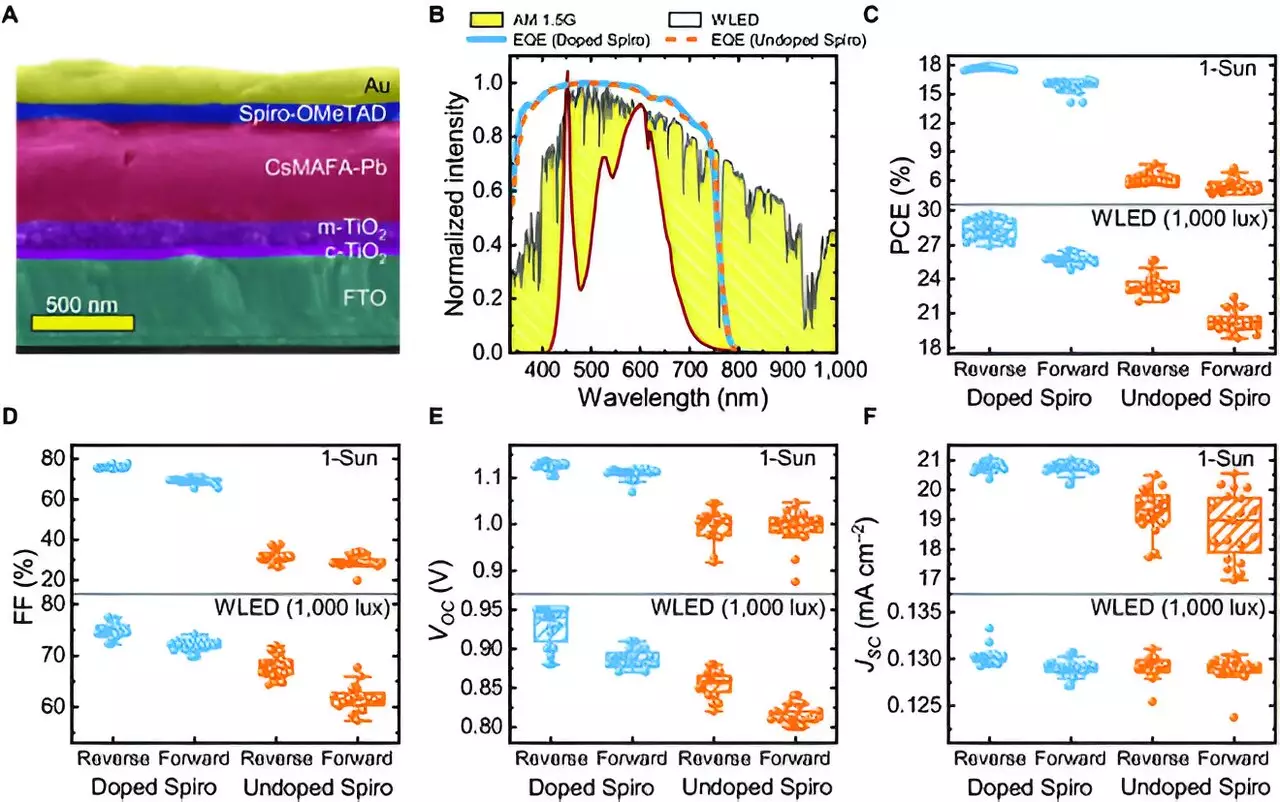Recent advancements in photovoltaic technology have cast a spotlight on the remarkable potential of lead halide perovskite (LHP) solar cells, particularly those that utilize Spiro-OMeTAD as the hole-transport material. Traditionally, dopants like lithium bis(trifluoromethanesulfonyl)imide (Li-TFSI) have been heralded as essential for achieving optimal performance in solar cells. However, new research underscores a game-changing revelation: undoped Spiro-OMeTAD may hold the key to harnessing solar energy more efficiently indoors, challenging conventional wisdom and redefining efficiency expectations.
Decoding Performance Metrics
At first glance, one might assume that the undoped variation of Spiro-OMeTAD would underperform sternly against its doped counterparts, particularly under standard 1-Sun illumination whereby it delivered efficiencies of merely 7.7%. Yet, the real intrigue begins when the lighting conditions shift. Under dimmer indoor environments characterized by 1000 lux illumination, undoped devices surprisingly soared to an impressively competitive 25.6%. This intriguing phenomenon raises critical questions about the forecasting of solar cell efficiencies and their actual viability in varying light scenarios.
The enhanced fill factor observed at reduced light intensities acts as a cornerstone of this performance improvement as it mitigates the adversarial effects of series resistance, a common hurdle in photovoltaic efficacy. This finding suggests that the structure and material engineering of solar cells ought to be recalibrated for the specific lighting environments they are intended to operate in, effectively flipping previous assumptions about performance evaluation.
A Game Changer for Stability and Reliability
In addition to outstanding efficiency, the stability of solar cells during operational exposure has emerged as a pivotal aspect of their commercial viability. The new findings revealed that undoped Spiro-OMeTAD devices exhibited an astonishing ~25% boost in maximum power point efficiency when subjected to continuous white light. This stands in stark contrast to the functionalities of doped alternatives, potentially marking a pivotal turning point in the way we gauge potential solar solutions.
Moreover, these undoped devices present a lowered hysteresis at dim light levels, alongside an open-circuit voltage of approximately 0.65 V at just 50 lux. Such features render them exceptional candidates for situations where lighting is suboptimal, making them not only innovative but also reliable in real-world applications where typical cellular performance dips.
Rethinking Solar Cell Design for Indoor Use
What does this mean for the future of solar technology? This compelling research suggests that the traditional reliance on doped materials to achieve high efficiency may be misplaced, particularly for development targeted at indoor photovoltaics. As urban spaces become increasingly reliant on energy-harvesting solutions that function efficiently within artificial lighting, the need for a shift in design philosophy becomes evident.
Ultimately, this research invites a broader and more nuanced conversation surrounding photovoltaic optimization, urging engineers and scientists alike to rethink assumptions and adapt solar technologies that align with specific usage contexts, especially in indoor settings. As we embrace a new era of renewable energy, the advent of undoped Spiro-OMeTAD could shift our understanding of what’s achievable in solar cell technology, propelling us closer to sustainable energy solutions tailored to modern day needs.

